IoT has established a stable niche in the software development market and emerged as a key player complementing mobile application development. IoT applications can be found in almost every industry. The harmonious coexistence between IoT and Mobile app development ensures smooth interaction between humans and machines, advancing user experience and business efficiency. The perfect union of IoT and mobile applications provide immense opportunities to build innovative apps that can quickly and efficiently carry out iterative and time-consuming tasks.
So, is the increasing demand for IoT devices leading to the rise of IoT in mobile app development?
The answer is yes!
Here are some stats that may surprise you:
- Global IoT market was valued at USD 544.38 bn in 2022 and is expected to grow at a CAGR of 26.1% and rise from USD 662.21 bn. in 2023 to USD 3,352.97 bn. by 2030[1].
- The international mobile app development market is predicted to grow at a CAGR of 23.80% and climb from USD 82.32 Bn in 2022 to USD 366.34 Bn by 2030[2]. Further, the critical factors driving the mobile app development market during the forecasted period are creative concepts and new developments.
This blog explores the concept of IoT in mobile app development, its benefits, and its challenges. It also covers how IoT will continue to impact the future mobile app landscape.
What is the Impact of IoT in Mobile App Development?
IoT in mobile app development enables enhanced hybrid app development to create apps that run on multiple platforms and devices. Unlike traditional app development platforms that use wireless, Bluetooth, or cellular, IoT also opens possibilities for modern and intuitive connected apps to give users a seamless experience. Let’s dig into detail to understand the various ways IoT is transforming mobile app development:
Increased Demand for Hybrid Apps
IoT requires applications that work with various platforms and devices. This demand has expanded the scope for hybrid apps, which have undergone considerable improvements after the advent of IoT. User Experience (UX) and coding methods have advanced, enabling hybrid apps to provide superior performance across all connected devices and platforms. Unique, feature-rich mobile apps with capabilities to meet multiple functionalities simultaneously have come to life.
Let us explain to you with an example. Consider having a smart thermostat installed in your home, allowing you to use a dedicated IoT mobile app to control its settings when you are away. It provides real-time energy consumption data bifurcated for every room and electronic appliance in your home. It also provides data as per your specified time slots.
Further, it gives insights into energy consumption patterns and identifies areas where you can reduce it. The IoT-enabled device also helps you set rules and schedules to save energy while integrating with other devices like smart lighting systems and appliances in your home. And it also gives recommendations to reduce energy consumption. These features make hybrid apps the most convenient devices to manage and cooperate with IoT technologies.
Enhanced Connectivity Options
With mobile app development for IoT, the connectivity options are not limited to the traditional ones, like cellular, Wi-fi, and Bluetooth. The mobile apps can connect with smart devices and integrate with gateways using NFC (Near Field Communication), RFID (Radio-Frequency Identification), APIs (Application Programming Interfaces), and other IoT-specific protocols.
Reduces Human Effort
IoT facilitates interactivity between connected devices. It results in the automatic integration of device features into the IoT app. It helps developers build better functionalities and enhanced features while developing mobile IoT applications, even with the usual efforts they put into creating non-IoT mobile apps.
Increased Use of AI and ML
IoT-based solutions require mobile apps to analyze the collected data in real time and provide insights. It has grown the integration of technologies like Artificial Intelligence (AI) and Machine Learning (ML) into mobile app development for IoT.
Increased Security
There will be an obvious concern for data security when the devices are connected with operating systems and connection protocols in an IoT environment. However, IoT-based apps give security the first and foremost priority and ensure the prevention of glitches and security issues for the collected data from connected devices.
Top Industries with the Biggest Demand for Mobile IoT Applications
The rise in demand for smart connected ecosystems is increasing the usage of IoT mobile apps in different industries. Many industries, like healthcare, retail, agriculture, and automotive, leverage digital opportunities, can explore new and niche markets, and grow exponentially. Here are the industries harnessing the opportunity with IoT in mobile app development:
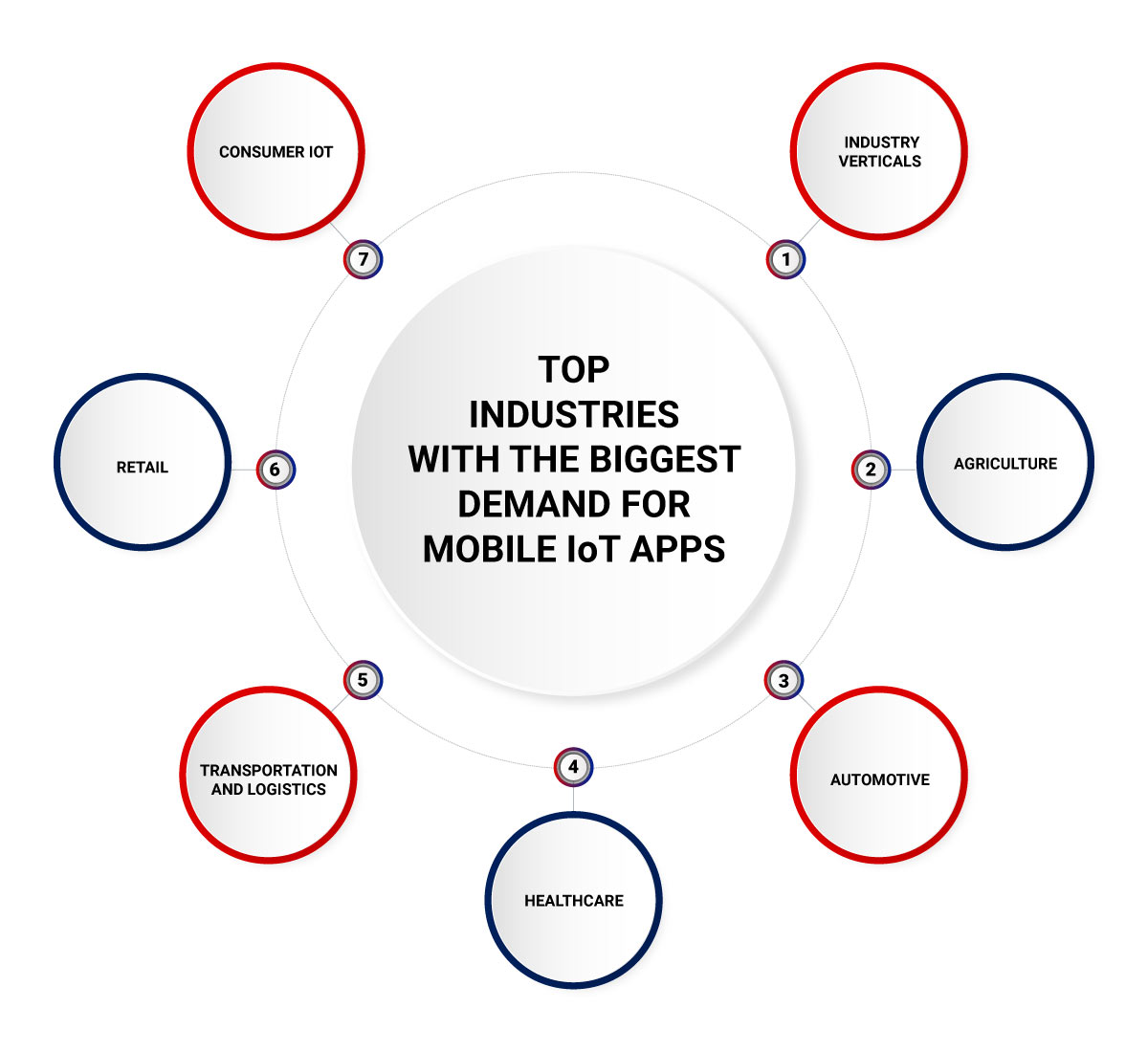
Industry Verticals
Varied industries, like manufacturing, energy, mining, and construction, leverage the benefits of Industrial IoT solutions. The Industrial Internet of Things has created a huge demand for mobile IoT-based apps as it provides convenience for managing inventory, tracking assets, and providing real-time viability in supply chain management.
Did you know?
- The global market for IIoT (Industrial Internet of Things) apps and platforms in the manufacturing industry[3] is expected to grow from USD 4.4 Billion to a whooping USD 22.3 Billion from 2021 to 2025.
Explore how we helped an Asian manufacturer by developing an IoT-based fluid management solution with advanced data analytics.
Agriculture
IoT is bringing incredible technological advances in agriculture and helping the world cater to the problems of feeding the ever-increasing population. Implementing IoT in agriculture helps farmers with crop management, field crop cultivation, climate predictability, livestock monitoring, and helps with end-to-end visibility of supply chain optimization.
Did you Know?
- The global agricultural[4] IIoT market is predicted to jump in value from USD 4.02 billion in 2021 to almost USD 7 Billion by 2025.
Automotive
IoT-based automotive apps help to collect important data like monitoring tiers’ pressure, controlling air quality within cars, and also helping to determine tread wear. Leveraging Automotive IoT advanced capabilities, IoT-based telematics and navigation systems can also be paired with mobile apps to collect data concerning traffic, road conditions, speed, route, and other driving behaviors.
Did you Know?
- The revenue of the global automotive[5] industry from IoT-based solutions is expected to reach USD 23.6 billion by 2025.
Healthcare
With the rise of telemedicine, remote patient monitoring, and the adoption of IoMT (Internet of Medical Things) technologies, healthcare professionals and patients are turning to IoT mobile apps. When IoT in healthcare is implemented, it helps improve patient experience, medical treatment outcomes, and healthcare efficiency.
Did you know?
The international IoT in the healthcare market[6] is forecasted to grow in size at a CAGR of 17.8% between 2023 to 2028.
Transportation & Logistics
Transportation and supply chain logistics is another industry sector leveraging the benefits of mobile IoT app solutions. From planning and monitoring cross-border fleets to tracking delivery processes, there are considerable use cases where IoT in transportation and logistics can be implemented.
Did you know?
IoT spending for the logistics industry[7] was USD 35.2 Billion in 2021 and is expected to increase at a CAGR of 11.2% and is expected to reach USD 114.7 Billion by 2032.
Retail
IoT in retail has transformed customer engagement by creating personalized shopping experiences with the use of sensors, cameras, and beacons. It provides vast opportunities, from analyzing real-time customer data to driving up revenues.
Did you know?
- The global IoT in the retail market[8] is predicted to rise at a stunning CAGR of 28.4% from 2023 to 2030.
Consumer IoT
With the rise in wearables and smart homes, there has been a huge demand for IoT-based consumer applications. All these connected devices require intuitive and user-friendly mobile apps to provide rapid innovation and personalized services. From voice controllers to smart light switches, consumer IoT applications have considerable use cases.
Did you know?
Statistics suggest that the global consumer IoT market[9] could grow at a CAGR of 10.77% from USD 221.7 Bn in 2022 to approximately USD 616.7 Bn by 2032.
How to Build an IoT Mobile App?
To develop an IoT mobile app, you should know what makes smartphones truly smart. The development process is more than building a customer-facing mobile application. IoT in mobile app development also has a distinct development process from the selection of hardware to deployment; we would like to walk you through each stage before you start your own adventure with mobile IoT app development. Here, we have compiled a five-step guide to help you create mobile apps for your IoT project:
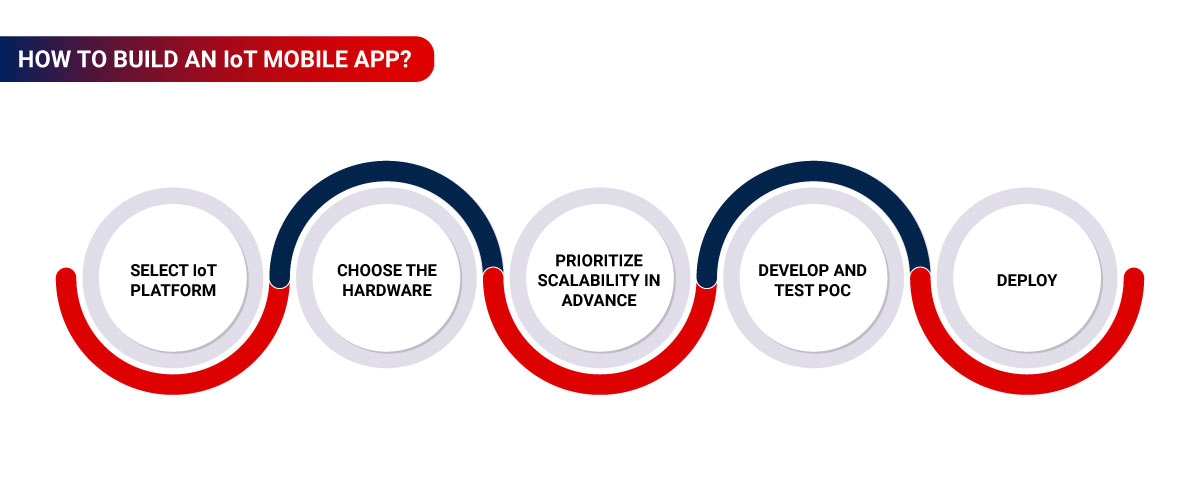
#Step 1- Select the Best-suited IoT Platform
Your selection of IoT platform depends on the scope of your project concerning how many devices you plan to integrate with the IoT mobile app. Ensuring compatibility between the IoT platform and all the connected devices is critical.
There are widely known and proven platforms for IoT in mobile app development;
- Azure IoT Suite
- HomeKit
- Android Things
- Ubidots
- Xively
- ThingWorx
#Step 2- Choose the Right Hardware
If you are not planning to build your own hardware for your IoT project, you will be required to choose from available device makers. When choosing the hardware for your IoT project, focus on three essential factors:
- The hardware must meet your product’s specific needs.
- It should be reliable in terms of connection accuracy.
- Choose sensors developed by trustworthy device makers.
#Step 3- Prioritize Scalability in Advance
The ability to scale in the future will determine how relevant your mobile application will be for end users because it will be required to deal with large amounts of data across many connected devices and processes. For this reason, cloud technology is the best bet for IoT in mobile app development than having on-premises data storage.
#Step 4- Develop and Test PoC
Once the identification of the right hardware and selection of the best-suited IoT platform is made, it’s time to create the MVP for mobile IoT following the standard steps. Here you will be required to design a prototype and verify the concept with first-hand users. Like other applications, here, you can test your application in a live environment to collect user feedback and improve your app accordingly.
#Step 5- Deploy
Once your IoT mobile app is developed and tested, you are all set to make it available for your end customers. The last step is to transfer from localhost to the live server environment and make your application available on App Store and Google Play through verification.
Benefits of IoT Mobile App Development
Mobile IoT applications provide many competitive benefits to help businesses keep up with a dynamic market. Take a look at some significant benefits of IoT apps here:
Increased Work Efficiency
The primary motivation behind building IoT mobile apps is automating and optimizing business processes. IoT-connected apps can perform multiple tasks without human efforts, like sending, receiving, and analyzing data which will help enhance overall work efficiency.
Better Insights into Consumer Behavior
Understanding your customer behavior, preferences, and expectations will help you make informed decisions. This information enables you to re-align marketing and business strategies by predicting their response.
Improved Security
The IoT environment involves several connected devices using multiple operating systems and connection protocols. It ensures higher security with strict encryption policies and security protocols as it manages user-related data. Mobile IoT applications utilize secure code and store data securely in the cloud to stop data thefts and cyber hacks.
Business Innovation
IoT-based solutions help businesses fix issues related to customers, operations, visibility, and more. With better insights and understanding of the internal and external factors influencing the business, C-suite executives are increasingly developing innovative solutions for their pressing issues.
Location Independence
Mobile apps perfectly complement IoT technology to control the entire IoT ecosystem anytime and anywhere. For instance, the camera at your smart home’s main door entrance can send notifications on your IoT-based mobile app anytime. Similarly, business owners can remotely monitor multiple warehouses using IoT mobile app. This functionality benefits numerous industries in different ways.
Challenges in IoT Mobile Applications and How to Address Them
The IoT technology is complex, and developing your custom IoT-based application could be difficult and time-consuming. Due to their centralized nature, you will encounter issues as IoT solutions store data in the cloud. Here are some challenges you could face while building mobile apps for IoT and how you can overcome them:
Security and Privacy
It is one of the significant challenges, especially when the IoT-based system has many connected devices. Also, as the data is stored on the cloud, it is vulnerable to cyber-attacks because it is difficult to protect every data usage pattern on the connected network.
Solution
Implementing strict security policies, strong encryption protocols, advanced authentication methods, firewalls, and intrusion detection systems are essential to prevent such thefts.
Data Collection and Processing
As IoT devices collect vast data, it becomes difficult for mobile applications to process it in real-time. You may encounter such issues when your devices aren’t integrated with advanced analytics tools to meet these requirements.
Solution
Hire a proficient team of IoT developers skilled at leveraging advanced analytics tools to collect and analyze the data and able to make informed decisions by quickly accessing, processing, and using these data.
Hardware and Software Compatibility
IoT applications sometimes are incompatible with a few types of hardware and software. There is no sure-shot way to ensure the compatibility of IoT devices, and it requires various configurations.
Solution
It is important to validate that your IoT product is compatible with various hardware and software. It also ensures that end users can access your app on various IoT devices without any hassle.
Partner with Rishabh Software to Develop IoT-Enabled Mobile Application
We have a well-earned reputation as a prominent mobile app development company with strong expertise in IoT development. We have successfully developed custom IoT mobile apps for IIoT and consumer IoT across various industries. If you are interested in building IoT mobile app development solutions, we can be your one-stop solution. Connect with us to leverage the full potential of IoT development services irrespective of any industry and vertical.
Take a look at our success story here:
Case Study 1: ELD Fleet Management IoT Mobile App Development

A client from the SCM and logistics industry wanted to build an Electronic Logging Device (ELD) IoT mobile app for fleet management. Our team created a feature-rich and secured IoT mobile application that complies with the Federal Motor Carrier Safety Administration (FMCSA) for Hours of Service (HOS) and provides accurate digital Records of Duty Status (RODS) for commercial drivers.
Key takeaways;
- 100% Driver Vehicle Inspection Reporting (DVIR) Automation
- 2x Fleet and Driver Efficiency Optimization
- 62% Rise in Fleet Profitability
Learn how our ELD fleet management mobile app development helped the client.
Concluding Thoughts
IoT in mobile app development is all set to impact the app development industry. It allows enterprises the ability to connect intelligently to other smart devices, as well as to the cloud, to further transform their businesses and enter new markets. As a leading IoT consulting company, we help enterprises facilitate operations and improve their business performance. Entrust us with your idea, and we will support you with our bespoke consulting and development expertise.
Frequently Asked Questions
Q: What are the Key elements of IoT-based connected devices?
A: The significant elements of IoT devices include:
- Sensors and Actuators are the building block of IoT functions. Sensors collect data, and actuators help in controlling IoT-based systems.
- Connectivity includes Wi-Fi, Bluetooth, cellular networks, etc., that help IoT mobile apps connect with devices.
- Data Processing for IoT-based solutions utilizes cloud technology and the software and hardware of IoT devices.
- User Interface plays a critical role in mobile IoT development and helps apps stay user-friendly, provide easy navigation, and deliver top performance. The IoT devices must utilize voice commands, touchscreens, and gestures.
Q: Which factors influence the development cost of IoT Apps?
A: Several factors affect the overall cost of IoT mobile app development that, includes the complexity of design, app infrastructure, hardware implementation, product features, app size, and developer’s cost as well as location.
Q: What are the best examples of Mobile IoT Apps?
A: The best examples of mobile IoT apps include Samsung SmartThings, Philips Hue, Fitbit, Tesla, and Nest.
Footnotes:
1. https://www.fortunebusinessinsights.com/industry-reports/internet-of-things-iot-market-100307
2. https://www.marketresearchfuture.com/reports/mobile-app-development-market-1752
3. https://www.statista.com/statistics/1339894/global-industrial-internet-of-things-platforms-and-apps-market-size/
4. https://www.statista.com/statistics/1222813/worldwide-agricultural-industrial-iot-market-value/
5. https://www.statista.com/statistics/423083/iot-units-installed-base-within-automotive-segment/
6. https://www.marketsandmarkets.com/Market-Reports/iot-healthcare-market-160082804.html
7. https://www.futuremarketinsights.com/reports/iot-spend-by-logistics-industry-market
8. https://www.grandviewresearch.com/industry-analysis/internet-of-things-iot-retail-market
9. https://www.precedenceresearch.com/consumer-iot-market
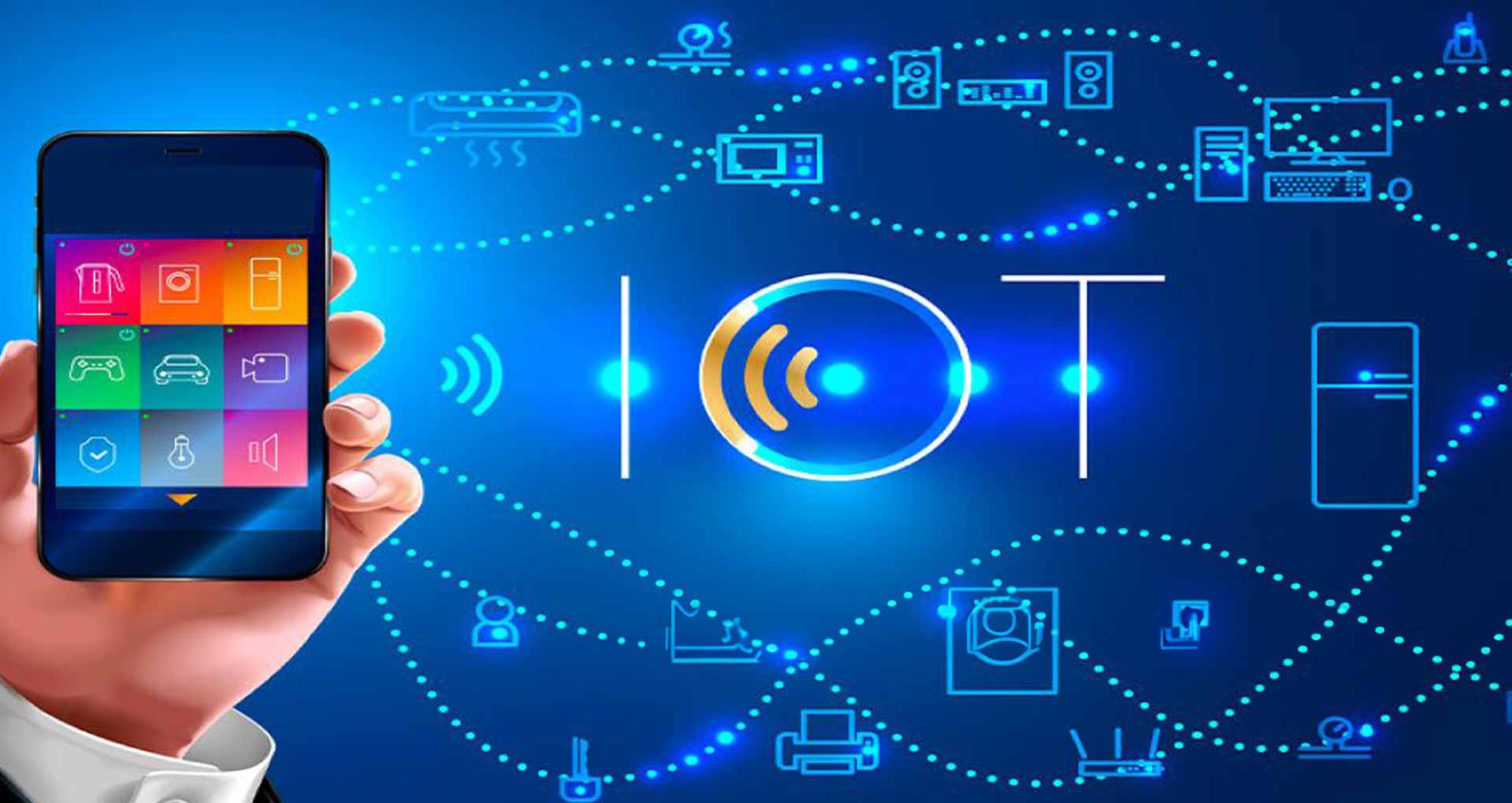
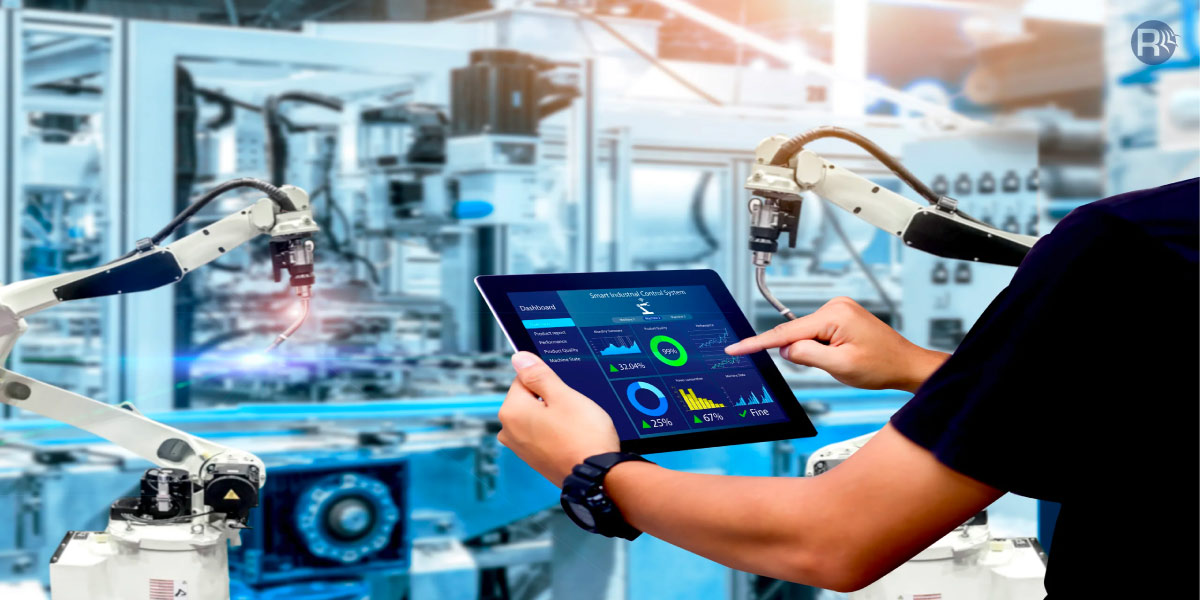
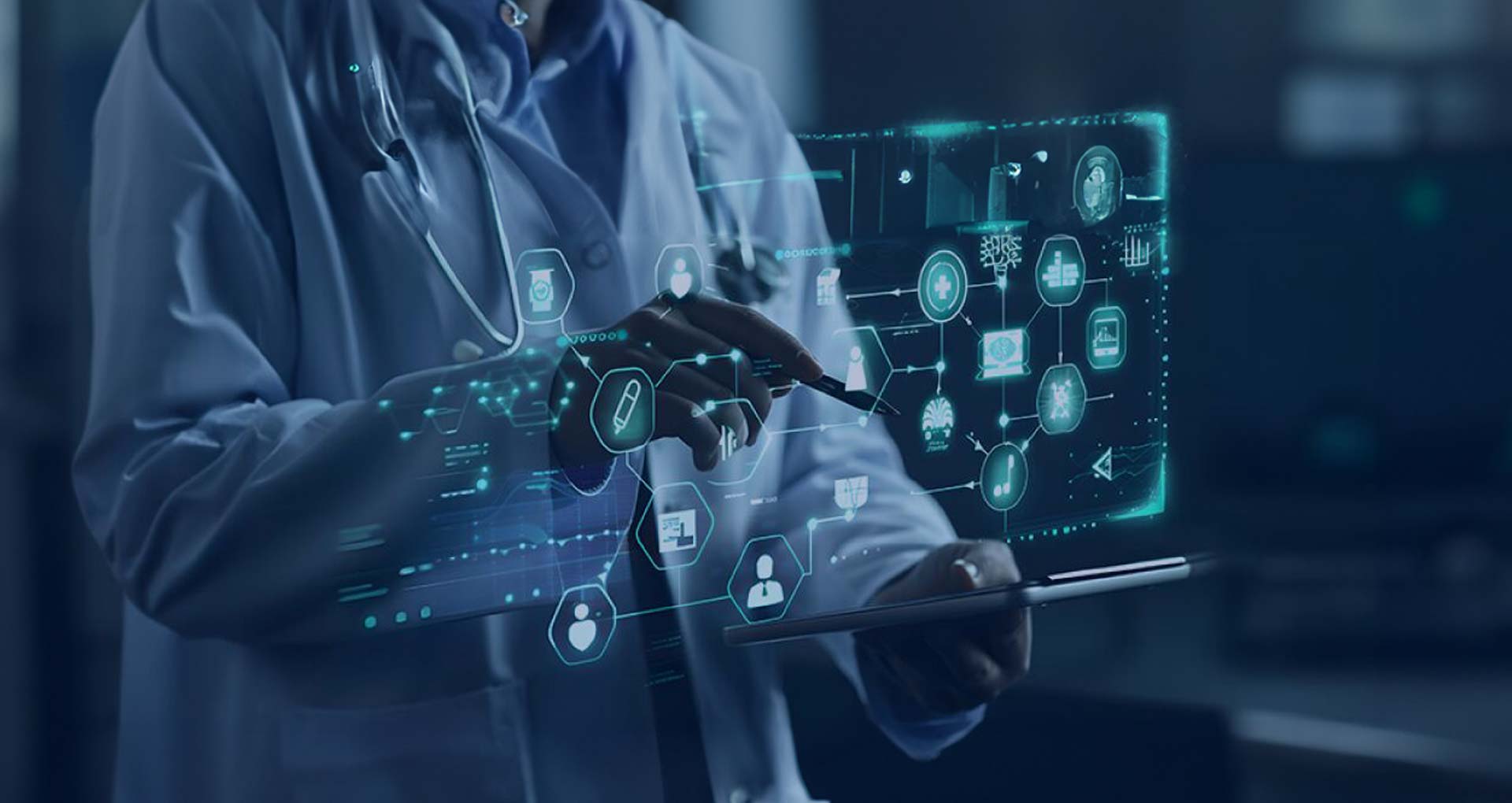
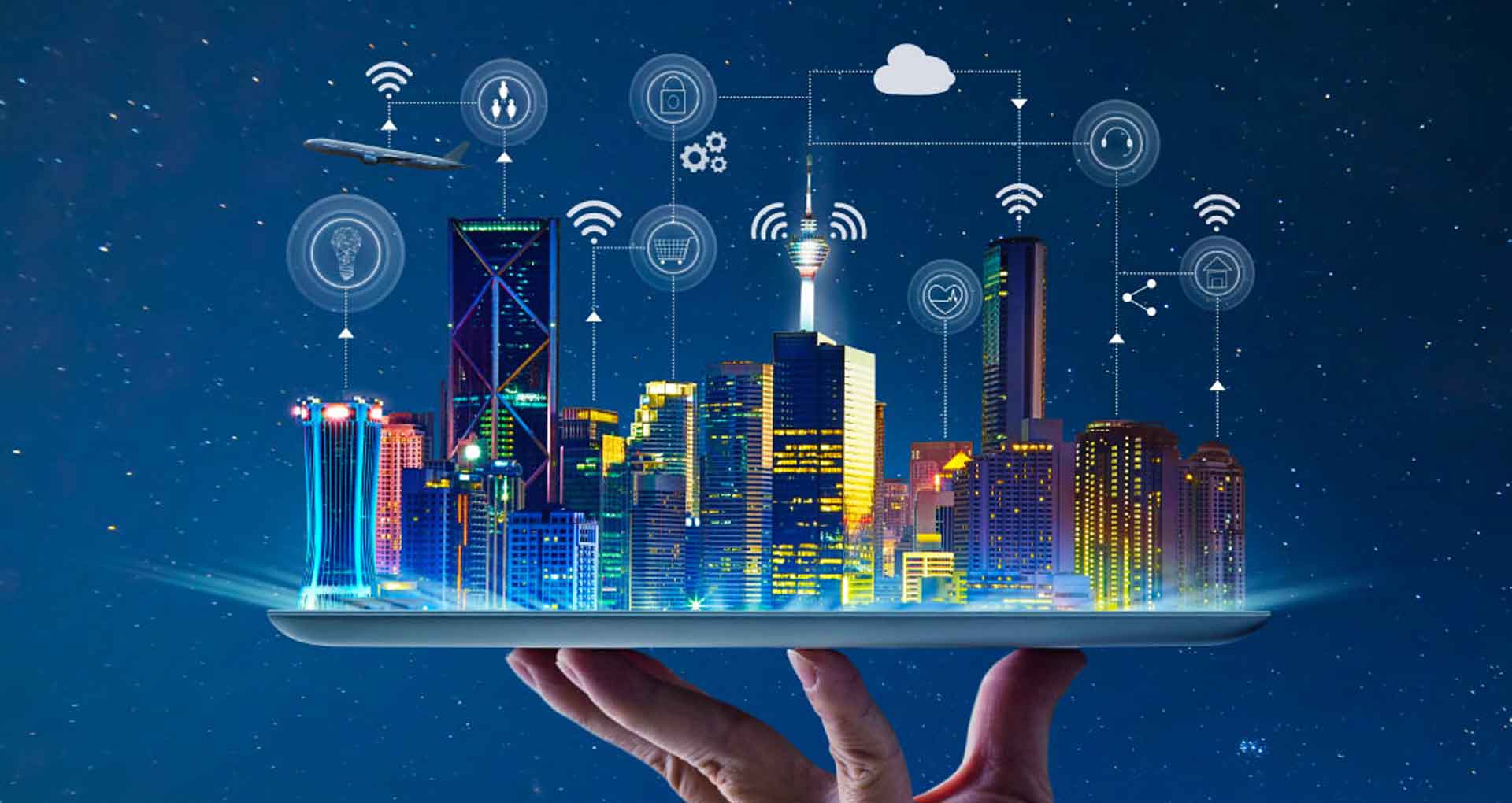






 30 Min
30 Min


